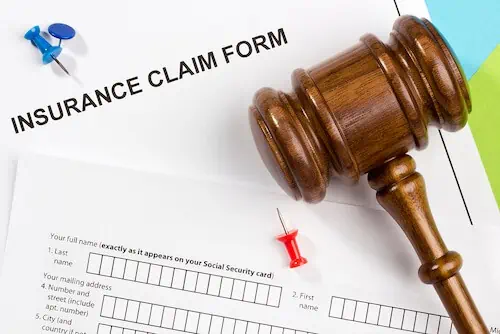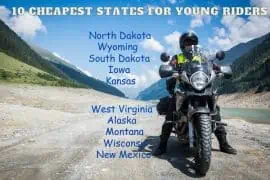Eighteen states use a no-fault approach to medical bills when accidents occur. All injured parties must go through their no-fault insurance provider to claim if they get hurt in a collision when this situation happens.
The concept of no-fault insurance is that it provides a system to require all drivers to have insurance coverage for their basic medical expenses after an accident, along with any passengers with them. This term is used because it doesn’t matter who was responsible for the collision.
Didn't You Try Our Quote Comparison Tool Yet? Save BIG by Doing it!
This combination of policy coverage options ensures that drivers receive the care they need for an injury and cost compensation without a fault determination.
The states that currently require no-fault insurance are Florida, Hawaii, Kansas, Kentucky, Massachusetts, Michigan, Minnesota, New Jersey, New York, North Dakota, Pennsylvania, and Utah.
Drivers can opt out of no-fault policies in Kentucky, New Jersey, and Pennsylvania.
Washington is one of eight unique states because it has a tort system, but the rules also allow drivers to purchase no-fault personal injury protection.
Table of Content
How Does This Insurance Policy Work?
No-fault insurance allows each driver to be paid by their insurer if there are basic medical bills after treating an injury due to an accident.
When PIP insurance is required, this policy replaces the compensation generally collected from the at-fault driver in an accident.
Since there is no need to determine fault, the insurance claims are paid quickly. When fault must be determined, payments might not happen until after a lawsuit and judgment in your favor.
What Does a No-Fault Policy Cover?
If you must obtain no-fault insurance coverage for your vehicle, it will cover the following items if you have a valid claim and have personal injury protection included.
- Medical expenses from injuries that occur from an accident.
- Lost income if an injury prevents you from working.
- Child care expenses and household services.
- Funeral expenses and survivors’ loss.
No-fault insurance is designed to assist with basic medical bills after an accident. It doesn’t include any repairs that might be necessary after a collision occurs. You’d need to carry other insurance coverage to fix your motorcycle or automobile.
When a vehicle receives damage in these circumstances, it is still the driver who caused the accident’s responsibility to reimburse the others involved through their liability insurance.
Since a no-fault state requires a mandatory first-party policy, anyone who gets hurt in a car accident cannot sue the other driver unless the medical bills exceed a specific amount or the injuries meet a severity threshold.
What Is Add-on No-Fault Insurance?
Instead of requiring no-fault insurance, eight states allow drivers and motorcycle riders to add personal injury protection to their regular policy. These states don’t limit injury lawsuits, so they combine the elements of the tort system with the benefits of having no-fault coverage.
In South Dakota and Virginia, PIP coverage is optional. Insurance companies are not required to offer it, so you may need to shop around for coverage.
Drivers in Arkansas, Maryland, Texas, and Washington have PIP as an optional add-on, but insurers must offer it.
Delaware and Oregon require PIP, which has a minimum of $15,000 for personal coverage. There is a $30,000 minimum per accident requirement in Delaware.
What Are the Benefits of Having No-Fault Insurance?
Whether you’re in one of the 12 states that require no-fault insurance or live somewhere that allows riders and drivers to purchase this coverage, you can access three primary benefits with this policy.
- Medical claims are paid quickly after an accident since an investigation to determine fault isn’t necessary.
- Insurance companies spend less money on litigation processes, which lowers the overall cost of coverage.
- When personal injury protection coverage is necessary, it covers other expenses in addition to medical bills.
The average cost for no-fault insurance in the United States is about $900 per year. That price provides the minimum coverage, but the precise cost for each person is based on a few individualized factors.
Besides purchasing more than the minimum amount, an insurance company looks at how you perform as a driver, various state requirements, and internal policies.
Variations to the No-Fault Approach in Each State
Although no-fault insurance is required in 12 states, its implementation can differ. Here is a closer look at some of the unique aspects of this way to protect yourself from the cost of medical bills should an accident occur.
PIP Coverage Requirements
The 12 states requiring no-fault coverage also have minimum personal injury protection requirements.
These minimums are subject to change at any time. Your insurance agent or broker can provide the current information for your state or jurisdiction when reviewing your choices.
Kentucky allows you to reject personal injury protection coverage in writing. In Pennsylvania, drivers must carry MedPay coverage, but not necessarily a PIP policy.
If you live in Michigan and are on Medicare, you can opt-out of having PIP coverage.
How to Make a No-Fault Insurance Claim?
Instead of filing a third-party claim after an accident, no-fault insurance has you submit it to your own insurance company.
Your insurance company then compensates you for specific financial losses related to the injuries from the accident, regardless of who caused it.
Since you don’t bear the burden of proving that fault in the accident lies with the other driver, it is typically faster and easier to approve a claim. The other issue is that drivers aren’t guaranteed a settlement, so you’ll need to put together all your documents from the accident and the treatment you need.
Two common reasons cause a no-fault denial: filing the claim too late or reaching your benefits limit.
In New York, you have 30 days from the time of the accident to report it in writing on form NF-2. Once you reach the limit of your benefits ($50,000 in New York), the insurance company can deny the claim.
With this information, you can discover if no-fault insurance is required in your state, how it works, and when a claim is needed.
Use This Tool for Free and Save on Quotes!







